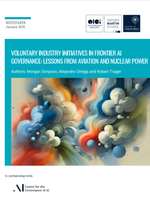Francois Cohen, Ella Adlen, Cláudia Coleoni, Cameron Hepburn and Frank Sperling
View Policy PaperThe Sustainable Development Goals (SDGs)1 aspire to make major strides on human development and environmental protection, across multiple sectors and spatial scales. Yet, there is an intense debate around whether the SDGs are achievable.2 Are there fundamental trade-offs between economic and environmental SDGs? The past suggests so. Economic development has come at the cost of perilous environmental degradation and increasing climate risks. The first part of this policy brief critically examines the trade-offs and synergies between the 17 SDGs. We use evidence gathered as part of recent progress assessments.3 These assessments show that high-income countries perform well on socioeconomic goals, but all countries perform poorly – sometimes very poorly – on environmental goals. We find strong synergies within the socioeconomic goals, and strong synergies within the environmental ones. But importantly, our analysis also suggests that the countries that perform best on the socioeconomic SDGs also tend to perform poorly on environmental SDGs. The second part of this brief delves into a possible resolution to these trade-offs: Natural Climate Solutions (NCS). NCS consist of approaches to tackle global warming with natural and managed forests, agriculture and grasslands, and wetland systems to lower greenhouse gas emissions and/or increase carbon sequestration4. These natural pathways comprise a combination of conservation, restoration, and improved land management interventions on natural and agricultural lands. Scientific assessments indicate that these pathways offer significant CO2 mitigation potential5, and have demonstrable co-benefits for other environmental SDGs. Do they also represent an opportunity to create synergies between environmental goals and economic goals? Our review of the literature suggests that, via the provision of ecosystem services, NCS pathways provide several co-benefits by interconnecting the environment and human well-being across social, cultural and economic dimensions6. We conclude that, with careful design and implementation, NCS may have the potential to strengthen the linkages between climate mitigation and sustainable development. We make five recommendations – which we describe in detail in our conclusions – to fully take advantage of NCS in the context of the SDGs: 1. Employ spatial approaches to identify candidate areas with the greatest potential for synergies 2. Manage NCS projects dynamically with multiple goals in mind, and set minimum thresholds to facilitate prioritization 3. When there are trade-offs, ensure that NCS projects include measures that compensate negatively affected stakeholders 4. Analyse the impact of NCS on vulnerable communities 5. Consider prioritizing protection efforts over restoration efforts





